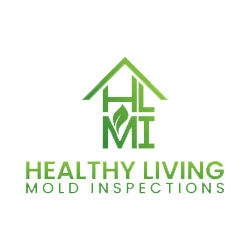Bergen County, NJ-based Mold Inspector: Dedicated To Protecting Northern NJ Homes Property Buildings And Your Health
 Healthy Living Mold Inspections is an accredited, independent Mold Inspection Service based in Ridgefield, Bergen County, NJ. We are focused on helping create a healthy living environment for families locally and also around the state of New Jersey. Striving to do this is our number one priority, making sure homes and offices are habitable.
Healthy Living Mold Inspections is an accredited, independent Mold Inspection Service based in Ridgefield, Bergen County, NJ. We are focused on helping create a healthy living environment for families locally and also around the state of New Jersey. Striving to do this is our number one priority, making sure homes and offices are habitable.
The way one must ensure a healthy, mold-free environment in a home or in a commercial building is to prevent the settlement of biological pollutants in building materials, HVAC systems, and the general interior of homes and buildings. There must be an effort to control sources of biological pollutants by minimizing chemical, particle, and moisture residues, and by properly disposing of wastes.
It is important to first understand the dynamics of a structure as it relates to moisture accumulation. Then, to identify the possible sources of indoor mold growth. Home, Property, and Building environments are always actively pursued by conditions such as the dynamics of geographic location, local climate, HVAC systems, moisture intrusion, openings, and various human and/or animal activities.
Consequently, many factors that play a corresponding role in mold growth, such as temperature, atmosphere, and availability of nutrients, cannot always be totally controlled. However, it is possible to maintain appropriate moisture levels, thereby preventing biological pollutants such as mold from becoming a serious and expensive problem. The key to keeping contamination at bay is to prevent moisture problems from occurring.
How is mold created indoors, in NJ?
Most of the mold found indoors comes from outdoors. Lightweight spores float in on air currents, often being carried long distances before settling on some surface. If that source is suitable, it will begin to grow. The ideal mold environment is 32° F to 104° F, with a pH of 3 to 8.
How do I know if I have a mold problem?
Mold growth can often be seen in the form of a discoloration or stain. A variety of colors are possible: white, orange, pink, blue, green, black, or brown. When molds are present and growing in large quantities (called colonies), they become a health concern.
Additionally, minor effects of wheezing or a runny nose noticed in an individual can be caused by enhanced mold levels in the environment.
What are some health concerns of mold?
- Allergenic
-
- Mold can cause allergic or asthmatic symptoms such as wheezing or a runny nose. These molds do not usually produce life-threatening effects, but they are problematic for those who are already allergic or asthmatic.
- Pathogenic
-
- Pathogenic refers to a disease-causing agent, like Mold. Mold can cause serious health effects in a person with decreased immune system function. A normal, healthy individual can probably resist most pathogen-driven infections, but high exposures may cause reactions in the lungs.
- Mycotoxins
-
- Mycotoxins are poisonous substances produced by living things. Those from mold can cause serious health effects in almost anybody. These effects may be short-term irritation and/or immune system problems.
